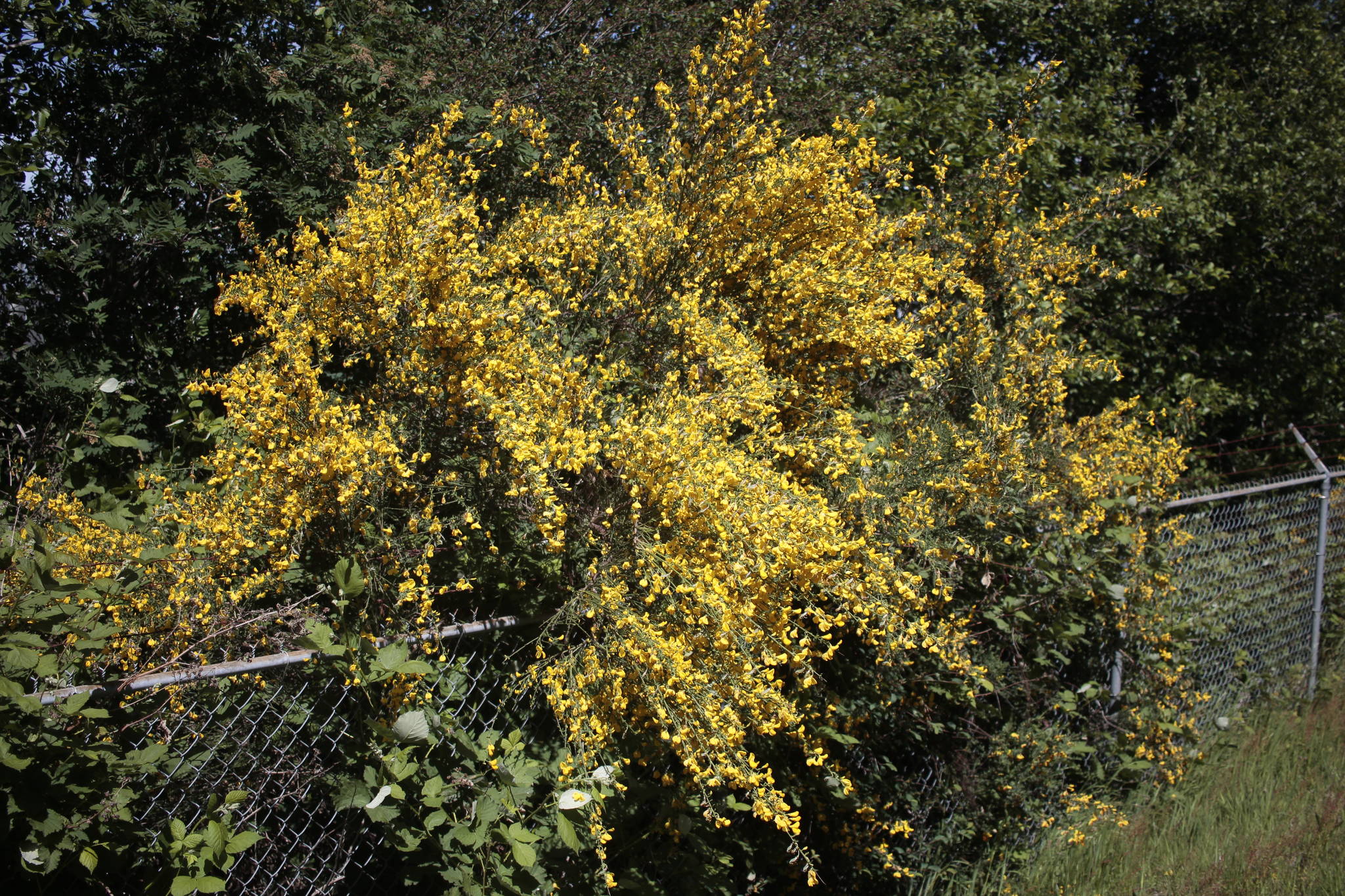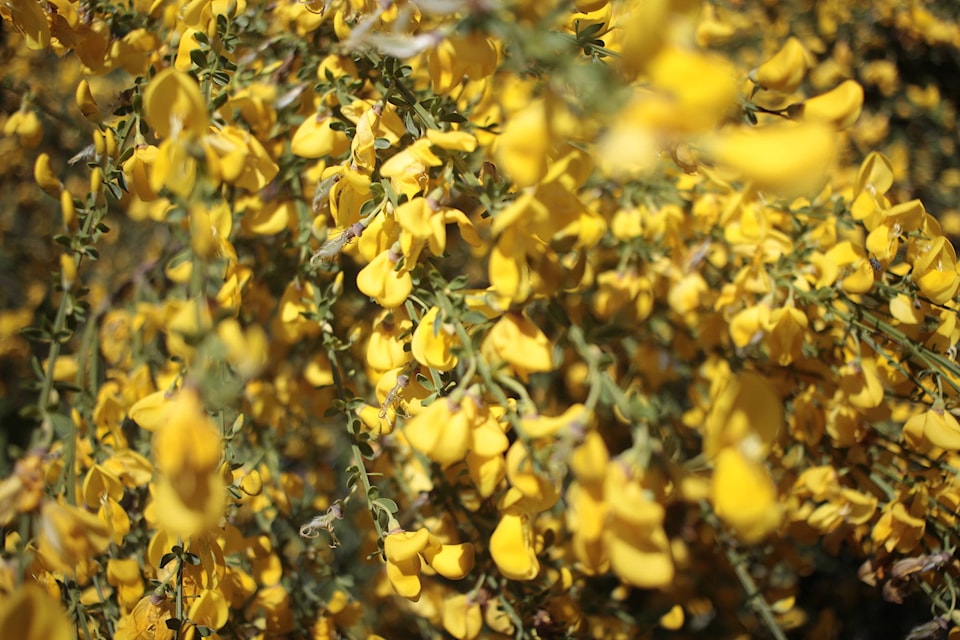It is hard to miss these days – empty lots, ditches and property edges are all bursting with yellow flowers.
Scotch Broom is an escaped ornamental flower that particularly likes the environment of southern and central Vancouver Island. The plant is distinctive for its yellow flowers, and typically blooms in the spring after periods of rain. According to the Invasive Species Council of B.C., “broom” spreads both by seed and by lateral budding. Mature plants can produce up to 3,500 seed pods, each with 5-12 seeds. It spreads on light-dominated and disturbed areas.
According to Greenways Land Trust habitat management coordinator Camille Andrews, an invasive species “outcompetes native vegetation and reduces the diversity of the area. In an area where you had a whole bunch of different plants growing, it is a single kind of plant that only benefits a few kinds of wildlife.”
Greenways, contractors, city workers and volunteers regularly hold events to combat the spread of broom. May 9 would have been Greenways’ annual Broom Bash event in the Campbell River Estuary. These events have been largely cancelled due to the COVID-19 pandemic, but Greenways is still encouraging people to cut broom while it is blooming using social distance techniques.
“We’re still inviting volunteers to go out with their own family unit or household and work on it on their own,” said Andrews. “We’re offering to provide them with clean tools and we’re going out to pick up the material afterwards.”
When it is cut in bloom, broom can be left on-site with no special precautions, since it does not have any seeds in the flower stage.
Other groups are active in broom eradication in the area. These include Broombusters, the City of Campbell River, and We Wai Kum First Nation. Broombusters is asking for more volunteers to help out with the eradication efforts.
Broombusters has been working on broom eradication in Campbell River since 2012, when they started working on two projects on the south end of the city along Jubilee Parkway and Dogwood.
“Each project took about four years apiece in the broom growing season to get it to suppress long enough to finally kill off the roots,” said Broombusters organizer Morgan Ostler. “We’ve had a large number of people and have had a really great time through those years carrying broom. It gives a great sense of satisfaction when we see the results of the years of work.”
Campbell River landowners are required through a bylaw to cut broom on their properties. The bylaw, which was enacted in 2019, includes a penalty of thousands of dollars and was the first of its kind on Vancouver Island.
Ostler explained that broom must be cut at the root while it is in bloom. At that stage, the plant expends much of its energy on the flowers, and cutting off the root causes it to die. Cutting higher than ground level only causes this season’s blooms to die, and the plant will come back in later years.
Volunteers only are asked to work for a few hours and to maintain social distancing while working.
Those interested in participating can contact Greenways at info@greenwaystrust.ca or Broombusters by calling Ostler at 250 202 7590 to coordinate tool pick up and to find an area to tackle.
RELATED: City of Campbell River making headway on invasive species treatment
New bylaw should clear up residential broom
marc.kitteringham@campbellrivermirror.com
Like us on Facebook and follow us on Twitter

